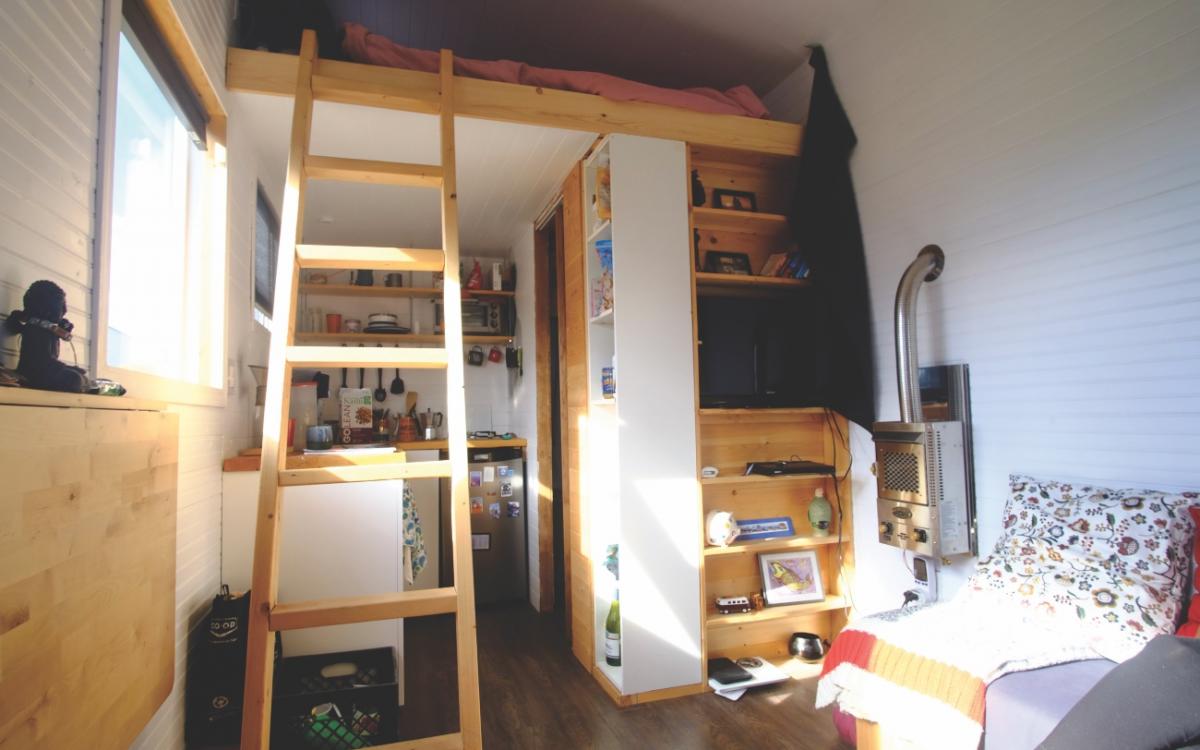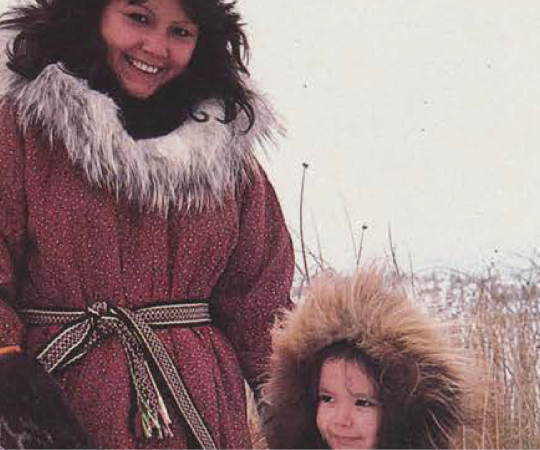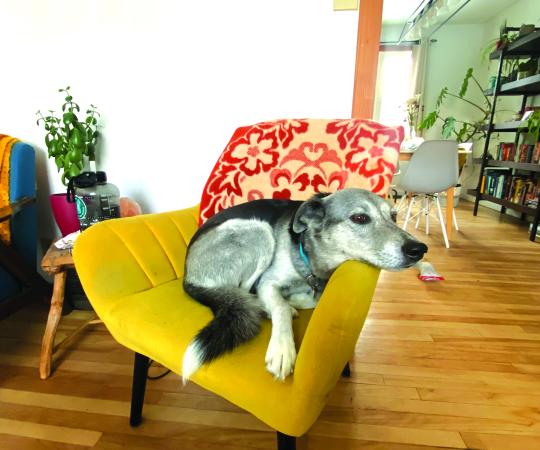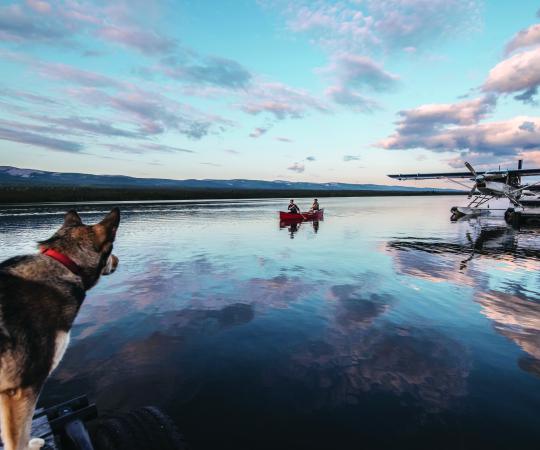Charlotte Morritt-Jacobs pulled the ice-cold blankets over her body with numb fingers, silently cursing herself for not having planned better. It was mid-December and the Yellowknifer was facing -45 C for the first time as a tiny house dweller—with plenty of trial and error.
“I felt a little foolish at times to have gone into winter with only one heat source, living in a subarctic climate,” she says, explaining she had bought a propane tank about a fifth of the size of what she needed. Propane falls below its boiling point at -42 C and begins to gel, becoming problematic quicker with a small tank. “That was definitely a learning experience.”
Morritt-Jacobs moved from a shared downtown apartment into her 284-square-foot home last September, becoming a first-time home owner at 27. She had been looking for a place to call her own for months, but upon viewing multiple trailers for sale, the journalist says nothing stuck out to her. “I didn’t need two to three bedrooms. I didn’t need multiple bathrooms.” When she saw a posting for a modern tiny house on YKTrader—a popular local classified site—she went to see it that very night. “I knew from the moment I walked in that that was living within my means.”
Morritt-Jacobs’ house, though small, was built with premium storage space. The (relatively) tall ceilings provide plenty of space for shelving and a loft for her bedroom. Her couch sits above a row of cupboards and the dining table pulls out from the wall. Still, the house maintains a homey vibe—from the seal skin pelt centerpiece Morritt-Jacobs says has followed her around the North, to the red and floral couch cushions, and colourful LED lights strewn across the walls. “I enjoy living under every colour of the rainbow on any night of the week,” she says, likening her home to a kid’s fort.
While Morritt-Jacobs is one of a handful of tiny house dwellers in the North, she fits in well with the type who choose tiny living. “It’s generally young people who are struggling to get into the housing markets and maybe are disheartened by real estate prices and mortgage costs,” says Whitehorse’s Laird Herbert, who once upon a time built tiny homes under his company, Leaf House Small Space Design and Build. These reasons are why Herbert himself decided upon tiny house living a decade ago. He was tired of paying $700 monthly to rent a room in a house with black mould. “I wanted to invest in something that I owned and felt good about.” He soon began building tiny houses for others, “as a response to the housing market, where there’s low vacancies and not a lot of options.”
Herbert made five tiny houses and helped guide others in building their own. But despite the lack of affordable housing in the Yukon, the movement hasn’t taken off the way it has elsewhere. So why is it that so few Northerners traded in their trailers for tiny homes? What’s stopping people from cozying up to this minimalist lifestyle?
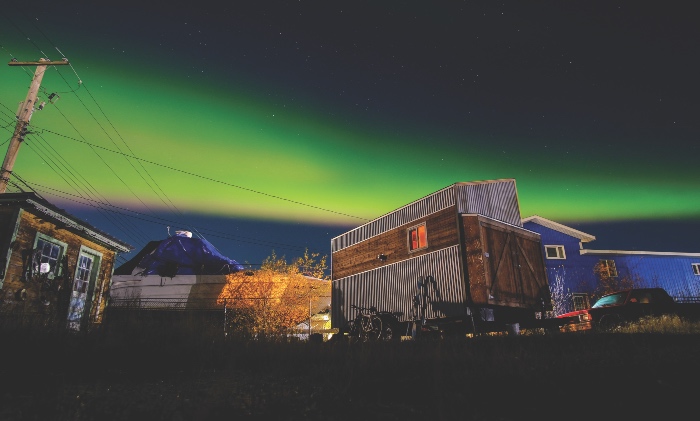
The modern tiny home boom can be traced back to Oprah. Back in 2007, Californian Jay Shafer first showed off his 96-square-foot house on the popular talk show, walking the TV host through the narrow space and brushing against walls that doubled as shelves. Seeing someone function in such a small space was unimaginable—and even comical—to many viewers, yet it got people thinking differently about the way they lived. Within months of the episode, Shafer’s Tumbleweed Tiny House Company was launched; by 2013, it became the largest manufacturer of tiny house RVs in North America.
The fad only grew from there, as TV shows Tiny House Nation and Tiny House Hunters extolled the virtues of tiny home living. At the same time, American bylaws revised building codes to make tiny houses easier to build and own. Today, there are more than 10,000 tiny houses across North America, but bylaws have yet to adapt here in Canada.
Herbert says there is no specific section for building tiny houses under current Yukon bylaws. Since many regulators are unfamiliar with tiny houses, an engineer is often required to come in and approve the design, which can be an expensive hire for a project premised on a philosophy of affordability. Herbert says regulators in the Yukon try to be flexible, but there is only so much they can do.
And then there’s the issue of where to park it. Herbert says tiny houses often have to be constructed on foundations due to strict building codes, which again drives up the cost because you have to buy land. “And land is not cheap in the Yukon,” he says.
Many choose to buy a tiny house on wheels instead, but that presents its own problems, as it can’t stay on the street any longer than a car can. “It’s a grey area because you can park in a driveway, so you’re technically like an RV—I have the same insurance as being on a trailer. However, you can’t park in a street for an extended period of time,” says Morritt-Jacobs. “You need to know someone to find a place to park.”
Organizations like Tiny Home Alliance Canada are calling for universal building codes for tiny homes. Herbert believes this is necessary, as current bylaws—for everything from stair access to clearances—don’t work well for the structures. “Inspectors have been flexible, but the national building code is built for conventional construction, and it was never designed for houses that are 60- to 250-square-feet,” he explains. “I would like to see more support from inspectors, planners, and building officials to formalize tiny houses on wheels.”
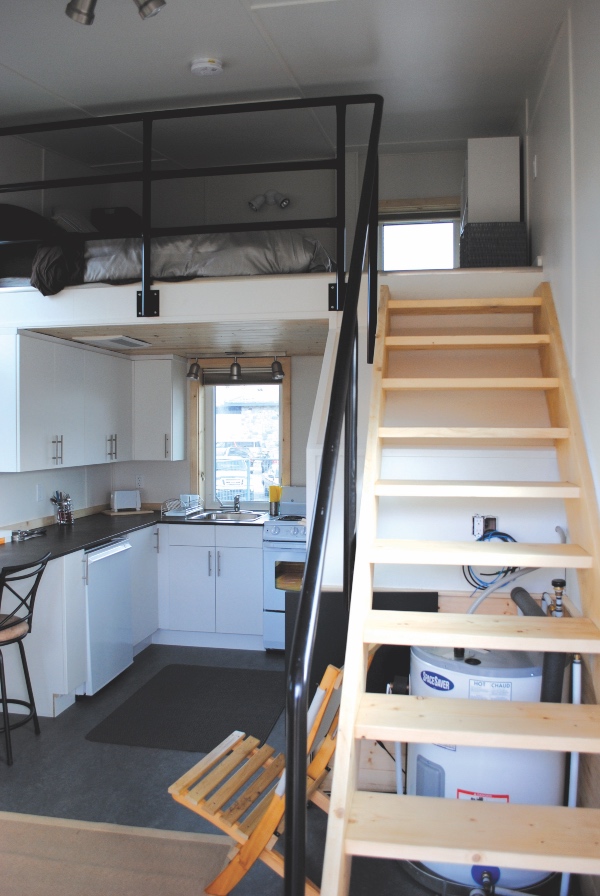
When Yellowknife chef Étienne Croteau proposed a tiny house neighbourhood to Yellowknife city council in September 2015, he was met by a packed room of people eager for new ideas to create affordable housing.
Croteau had parked his 350-square-foot home in a friend’s backyard, after having built it with his father. He envisioned a designated plot of land where he and other tiny home residents could forge a community rather than living scattered in yards all over the NWT capital. Croteau asked city council to grant a one-year lease on a piece of city-owned land, where he and nine others could park their tiny homes. After the year was up, the home owners could potentially buy the land.
It was clear during the meeting, and through a survey conducted by the city the following year, that this was a popular idea. Of 465 responses to the small lot development in the city, 86 per cent of respondents supported the concept, with 73 per cent of these people interested in living in the lot themselves. Of those interested, most were intrigued by the affordability of tiny living.
Croteau’s proposal presented new challenges the city hadn’t dealt with before, such as deciding what services the city would have to provide and whether the tiny houses needed to be on wheels or on a foundation. Finding an affordable lot was difficult, too. In the meantime, the group Croteau was working with struggled to maintain their faith in the project. “You need a really strong group of warriors to pass through so many challenges,” says Croteau. “The [tiny house] group I was with had good intentions, but in the end, we lost the passion. We dissolved the community and stopped the application.”
Still, some have been able to work around bylaws. For Yukoners, the dream of a tiny house neighbourhood came true in Whitehorse, only the plot of land is dedicated to transitional housing. Blood Ties Four Directions, a non-profit, originally proposed the idea back in 2017 after purchasing a lot near downtown for $200,000. But first, the organization had to ask the City of Whitehorse to rezone the land to fit multiple houses. Although some councillors worried it would set a precedent for other developments, the city eventually went forward with the approval. There are now five transitional houses on the lot, with tenants paying a subsidized rent. While some stay a few years to help them get back on their feet, others see it as a more temporary stop while they secure permanent housing. Either way, the tiny houses have offered up a sense of community and given houseless people an affordable place to call their own.
A similar neighbourhood is in the works in Cambridge Bay, Nunavut. Marla Limousin, the hamlet’s chief administrative officer, is planning a cluster of 25 small houses within a neighbourhood called Qaggiq, meaning a communal gathering space. Limousin readily admits the project is more complicated than she originally thought. She, and her team at the mayor’s youth advisor council, have spent months creating plans for the project, sourcing materials and figuring out how to work around Nunavut’s building bylaws. That has meant switching from tiny homes to not-so-tiny homes—or what Limousin calls a “Small House, Smart House.” These dwellings are slightly larger, at 760-square-feet, because the territory’s bylaws require a minimum size for each house on a property, while also limiting lots to one house each.
Despite the struggle, Limousin is determined to push the project ahead as a solution to the community’s lack of housing. With a population of 2,000 people and growing, there are around 140 families on the waitlist for housing. Meanwhile, Limousin says families often cram into houses that are too small; many children have never had their own room or even bed because there simply isn’t enough room. “If you want to live in Cambridge Bay, unless you build your own home, there’s really nowhere to live,” she says. “I think [this project] will relieve this heavy burden on public housing and will allow people who need public housing to get into it.”
Cambridge Bay is the first community in Nunavut to come up with such a project, but Limousin says that’s no surprise, pointing to the innovative spirit in the booming Kitikmeot hub. “The original concept was if these homes… can work in Cambridge Bay, we could build those units and ship them by barge to other communities in our region and then we can use that model to go to Rankin, or Iqaluit, or Iglulik.”
Most tiny house dwellers say their way of life is not for everyone. These structures rarely fit more than one person and require a degree of resourcefulness and perseverance from their owners. Most are off-grid and not usually connected to plumbing or electricity. Not to mention, tiny home living requires a whole other way of life when it comes to consumerism.
“My values had to change,” Yellowknife’s Morritt-Jacobs says. “When I moved, I had six towels and I was like, what kind of queen needs six towels? I used the Marie Kondo philosophy where if I hadn’t used it in 90 days or won’t use it in 90 days, I chucked it.”
Croteau lived in his tiny house for six years before making the difficult decision earlier this year to sell both his business and house to start a new adventure in Québec. While this is likely not the end of his tiny house experience, Croteau says the time he spent within those four humble walls taught him a great deal about living sustainably and reducing his carbon footprint.
In the meantime, Croteau is hopeful other tiny house dwellers will pick up where he left off in Yellowknife. It isn’t an easy lifestyle, he says, but it’s certainly worth it. “When I lived in my house, I was at peace,” he says. “If you want it for you, you can have it. It’s really possible.”
That rings true for Morritt-Jacobs, who is already preparing for her next winter in her tiny home. This time around, she’s prepared with a 100-pound tank, as opposed to 20 pounds, and a wood stove as her primary source of heat.

